The Source of Sound involves the material, the movement and the vibration of which music arises.
Episode 18: the dissonances of the Lahu
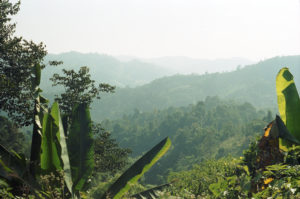
Not much is known of the history of the Lahu. There are some clues that they originally came from Tibet, but first appeared in Chinese sources in the 18th century. In that time, China was expanding to the south, but hit heavy resistance of the mountain inhabitants in the region they called Lo hei. This led to an immigration of the Lahu south, to Birma Thailand and Laos. An immigration, that continued until the 70’s of the last century.
Although the Lahu are related in language and partly in culture, they aren’t a unity. The are divided into groups that can be recognized through colour designations like black, red, yellow and white, and by regional designations like shehleh and kui (couwee). But basically, they are anarchist and every villages and every family decide on their own course.
1. Improvisation on the Naw (7’03)
Musician unknown.
Recorded: near Mae Kam Pong, Lampang province
Thailand, August 1992.
CD Lahu
Soundreporters SR 1004, track 1
2. Lonely (5’24)
Musicians unknown
Recorded: Pong Nam Ron, Chiang Rai province
Thailand, August 1992
CD Lahu
Soundreporters SR 1004, track 2
3. Ha Paa medley.wav (8’17)
Ha Paa – Naw
Recorded: Ban Pa Deng Jaka-e, Chiang Dao district, Chiang Mai province
Thailand, April 1995
CD Lahu
Soundreporters SR 1004, track 3
4. Song for a Lady (2’47)
Nai JaYu Penaho
Recorded: Wat Ban Jala, Meung Long district, Luang Namtha province
Laos, January 2005
CD Lahu
Soundreporters SR 1004, track 4
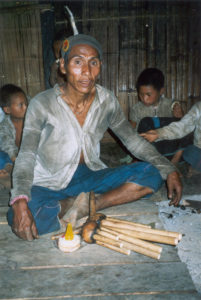
A Naw Mi (mouth organ) player of the Kui, Lahu Nyi. The mouth organ stil has bamboo-free reeds. The two specimens were tuned differently but are counted to the same type. He played a series of songs for dancing, courting and honouring spirits..
5. The old people share the food (1’40)
Naw Mi – vocal
Recorded: Kentung,
Burma. April 2003
CD Lahu
Soundreporters SR 1004, track 6
6. When ever the people want to enjoy (1’02)
Naw Mi – Naw
Recorded: Kentung,
Burma. April 2003
CD Lahu
Soundreporters SR 1004, track 7
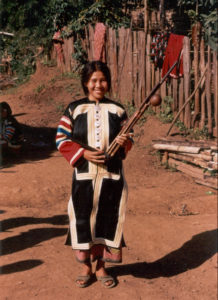
7. Blessing (3’39)
Naa Ha, Naa Le – vocals, Naa Bu – Naw
Recorded: Luk Khao Lam, Soppong district Mae Hong Son province
Thailand, October 1994
CD Lahu
Soundreporters SR 1004, track 8
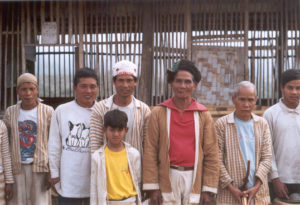
8. Welcome (6’54)
zang 2x man, 2 mondorgels, eerste deel langer lied.
Voc: Nai Jaka
Voc: Nai Jalu
Naw: Nai San Jo
Naw: Nai Jai Yi
Ban Pong Pha, Bokeo, Laos, December 2004
CD Lahu
Soundreporters SR 1004, track 11
9. Yi Ma Ha (4’26)
Tai Yae – vocal, Aie Saw – Naw, Ja Bue – luit
CD Thailande. Triangle d’Or.
Globe Music GMCD 104, track. 8
Rec: François Jouffa
10. Trio Libre (3’59)
Tai Yae, Aie Saw – Naw, Ja Bue – luit
CD Thailande. Triangle d’Or.
Globe Music GMCD 104, track. 9, Rec: François Jouffa
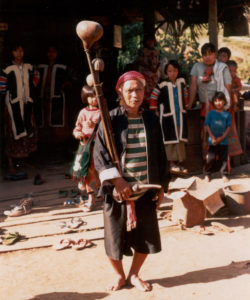
11. Talking to the spirit (3’18)
Ken Yei – Naw Kuma
Recorded: Khün Mon, Chiang Mai province
Thailand, 1996
CD Lahu
Soundreporters SR 1004, track 8
12. The telephone call (4’52)
Som ju, San Pao – vocals
Recorded in Sipsongpanna.
China, Februari 2006
CD Lahu
Soundreporters SR 1004, track 12
13. Dance for Pra Jao (12’12)
Nang Mi Muang Khampai – Naw
Nai Chadee Pa Choi – drum
Ko Heng – cymbals
Bulu Kwi – Gong
Recorded: Ban Mae Pun Luang, Chiang Rai province
Thailand, December 2004
CD Lahu
Soundreporters SR 1004, track 13








